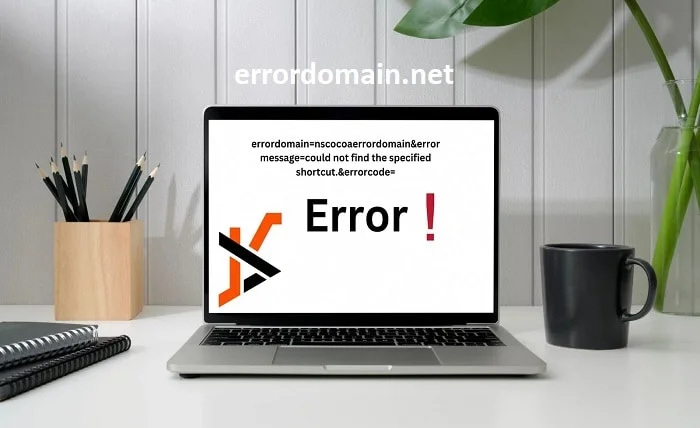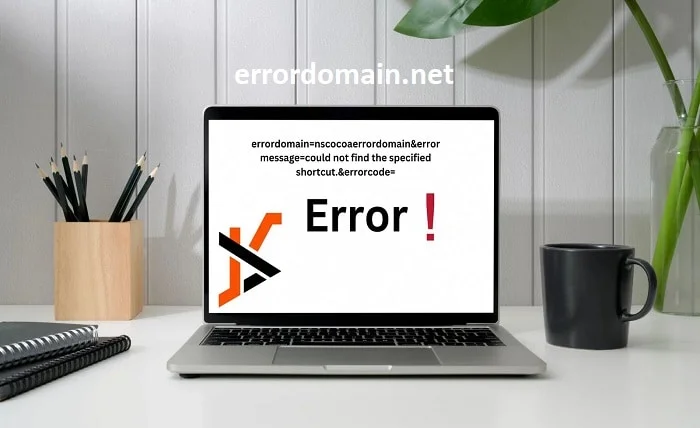important Description: Learn all about NSCocoaErrorDomain, its importance, common errors, and how to handle them in your code effectively.
What is NSCocoaErrorDomain?
NSCocoaErrorDomain is a domain used in Apple’s Cocoa framework to encapsulate a wide range of error codes related to the Cocoa API. This domain is integral to macOS and iOS development, providing developers with a structured way to handle errors that arise within the Cocoa framework.
Definition and Scope
NSCocoaErrorDomain represents a broad category of errors that can occur within the Cocoa framework. These errors range from file system issues to data storage problems, and understanding them is crucial for effective debugging and error handling in applications.
Origin and Evolution
The concept of NSCocoaErrorDomain originated with the introduction of the Cocoa framework. Over time, it has evolved to cover a comprehensive set of error scenarios, making it easier for developers to identify and resolve issues in their applications.
Relevance in Development
NSCocoaErrorDomain is essential for developers working on macOS and iOS platforms. It provides a systematic approach to error handling, ensuring that applications can manage and recover from errors gracefully.
Common NSCocoaErrorDomain Errors
Understanding the common errors within the NSCocoaErrorDomain can help developers troubleshoot issues more efficiently. Here are some of the frequently encountered errors:
List and Explanation of Common Errors
- NSFileNoSuchFileError (Code 4): This error occurs when a specified file cannot be found.
- NSFileLockingError (Code 255): This error indicates issues with file locking mechanisms.
- NSKeyValueValidationError (Code 1024): This error is related to validation problems in key-value coding.
Specifics of Error Code 4
Error Code 4, also known as NSFileNoSuchFileError, indicates that the specified file could not be found. This is a common error that developers encounter when dealing with file paths and file operations.
Causes of NSCocoaErrorDomain Errors
Identifying the root causes of these errors is the first step toward effective resolution. Common causes include incorrect file paths, insufficient permissions, and corrupted data.
Common Causes
- Incorrect File Paths: Incorrectly specified file paths can lead to errors like NSFileNoSuchFileError.
- Insufficient Permissions: Lack of necessary permissions to access a file or directory can trigger NSCocoaErrorDomain errors.
- Corrupted Data: Data corruption can result in various errors within this domain.
Debugging NSCocoaErrorDomain Errors
Effective debugging techniques and tools are essential for resolving NSCocoaErrorDomain errors.
Techniques and Tools
- Logging: Implementing detailed logging can help trace the origin of errors.
- Breakpoints: Using breakpoints in the code can assist in identifying the exact location where an error occurs.
- Tools: Tools like Xcode’s debugger and Instruments are invaluable for debugging these errors.
Handling NSCocoaErrorDomain in Code
Proper error handling practices are crucial for robust application development.
Best Practices
- Error Checking: Always check for possible errors after operations that might fail.
- Graceful Degradation: Ensure your application degrades gracefully in case of errors.
- User Feedback: Provide informative feedback to users when an error occurs.
Real-World Examples
Looking at real-world examples can provide valuable insights into handling NSCocoaErrorDomain errors.
Case Studies and Examples
- File Management App: Handling NSFileNoSuchFileError in a file management application.
- Data Storage: Managing NSKeyValueValidationError in data storage scenarios.
Tools and Resources
Various tools and resources are available to assist developers in managing NSCocoaErrorDomain errors.
Useful Tools and Resources
- Xcode: The primary development environment for macOS and iOS applications.
- Instruments: A performance analysis and testing tool included with Xcode.
- Apple Developer Documentation: Comprehensive resources and guidelines.
NSCocoaErrorDomain in Different Platforms
NSCocoaErrorDomain errors can vary across different Apple platforms such as macOS and iOS.
Variations across macOS, iOS, etc.
- macOS: Specific errors related to the file system and user permissions.
- iOS: Errors often relate to data storage and user interface elements.
Preventing NSCocoaErrorDomain Errors
Preventing errors is always better than troubleshooting them.
Prevention Techniques
- Validation: Always validate input data to prevent errors.
- Permissions: Ensure your application has the necessary permissions.
- Testing: Regularly test your application to catch errors early.
Best Practices for Error Handling
Adopting best practices for error handling can significantly reduce the occurrence of NSCocoaErrorDomain errors.
Industry Best Practices
- Consistent Error Handling: Implement a consistent approach to error handling across your application.
- User Experience: Focus on improving the user experience by handling errors gracefully.
- Documentation: Keep thorough documentation of your error handling strategies.
Developer Guidelines
Apple provides specific guidelines for handling NSCocoaErrorDomain errors.
Apple’s Guidelines
- Error Domains: Understand the different error domains and their significance.
- Localized Descriptions: Use localized descriptions for errors to enhance user experience.
- Error Codes: Familiarize yourself with common error codes and their meanings.
FAQs on NSCocoaErrorDomain
What is NSCocoaErrorDomain?
NSCocoaErrorDomain is a domain used in Apple’s Cocoa framework to represent a wide range of error codes related to the framework.
How can I debug NSCocoaErrorDomain errors?
Use logging, breakpoints, and tools like Xcode’s debugger and Instruments for effective debugging.
What causes NSFileNoSuchFileError?
This error occurs when a specified file cannot be found, often due to incorrect file paths or missing files.
How can I prevent NSCocoaErrorDomain errors?
Validate input data, ensure necessary permissions, and regularly test your application to prevent errors.
What are the best practices for handling NSCocoaErrorDomain errors?
Implement consistent error handling, focus on user experience, and maintain thorough documentation.
Are NSCocoaErrorDomain errors different across platforms?
Yes, they can vary. For instance, macOS errors often relate to the file system, while iOS errors may involve data storage and UI elements.
Troubleshooting Tips
Here are some tips for quickly resolving NSCocoaErrorDomain errors.
Tips for Quick Resolution
- Check File Paths: Verify that file paths are correct.
- Verify Permissions: Ensure your application has the necessary permissions.
- Consult Documentation: Refer to Apple’s developer documentation for guidance.
Future of NSCocoaErrorDomain
The evolution of the Cocoa framework will influence the future of NSCocoaErrorDomain.
Evolution and Future Trends
- Enhanced Error Handling: Expect more robust error handling mechanisms in future Cocoa releases.
- Better Tooling: Improved tools for debugging and managing errors.
Community and Support
Engaging with the developer community and seeking support can be incredibly helpful.
Forums, Communities, and Support Channels
- Apple Developer Forums: A great place to seek advice and share experiences.
- Stack Overflow: A popular platform for getting help with coding issues.
- GitHub: Explore repositories and discussions related to NSCocoaErrorDomain.
Conclusion
Understanding and effectively managing NSCocoaErrorDomain errors is crucial for developing robust applications on Apple platforms. By following best practices and utilizing available resources, developers can ensure their applications handle errors gracefully, providing a better user experience.




